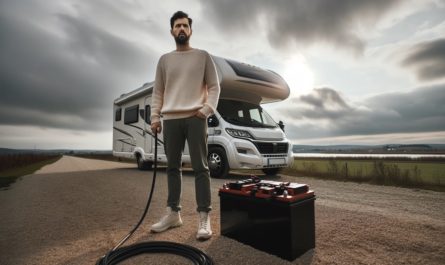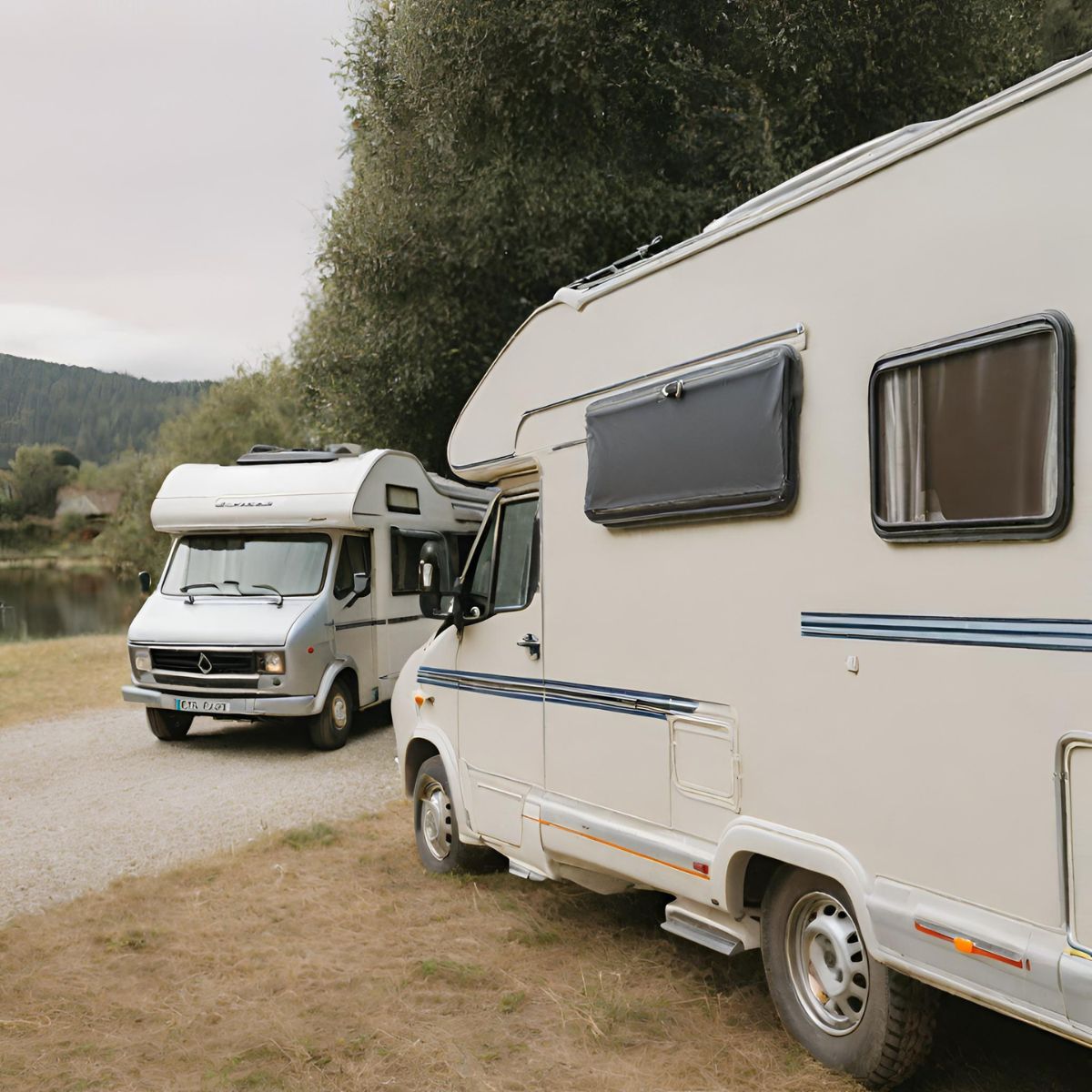The world of motorhome batteries might initially seem overwhelming, but understanding these essential components is key to ensuring your RV remains powered and ready for adventure. Delve into the intricacies of motorhome batteries, explore the differences between lead-acid, AGM, and lithium-ion options, and learn how to choose, maintain, and troubleshoot these powerhouses. By the end of this comprehensive guide, you’ll be well-prepared to make informed decisions and keep your motorhome running smoothly for years to come.
Key Takeaways
- Understand the types of motorhome batteries, their maintenance requirements and capacity to select the right one for your needs.
- Proper care and maintenance can help extend battery lifespan. Prevent overcharging or undercharging with a multistage charger, isolator switch etc.
- Consider size/capacity & manufacturer’s warranty when selecting from lead-acid, AGM or lithium ion options such as Renogy Deep Cycle AGM Battery & LiTime Lithium Ion Battery.
Understanding Motorhome Batteries
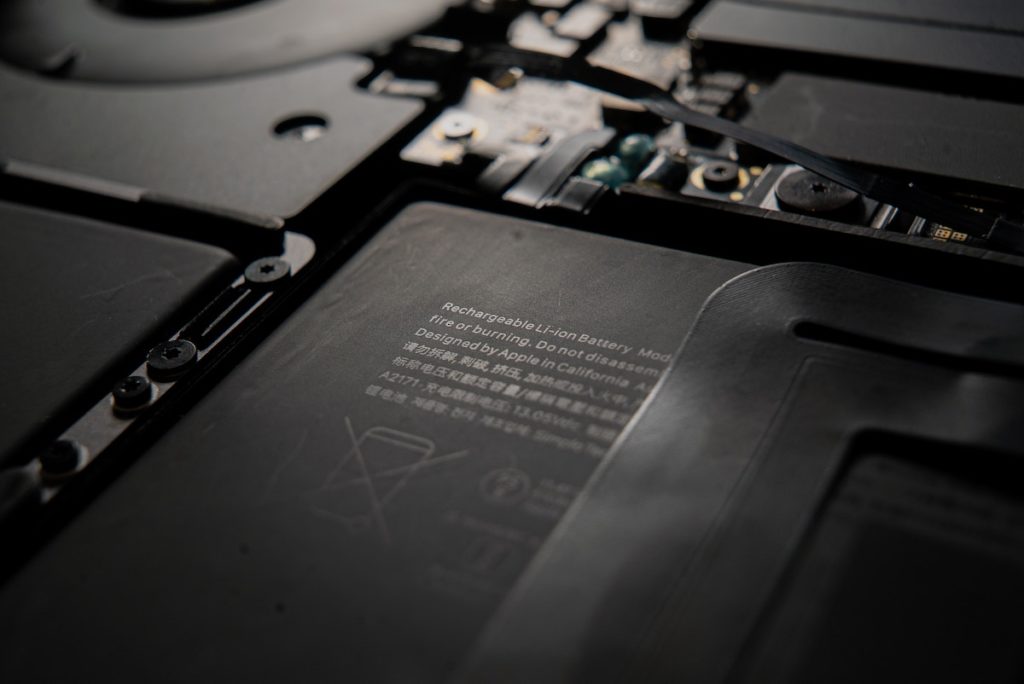
RV owners need to take proper care of their motorhome batteries, which power the electrical systems in an RV like lights and appliances. These deep cycle batteries come in various types such as lead-acid, AGM or lithium ion based. An extended period with the battery left discharged can result in failure so maintaining it by recharging between cycles is important for a long life and efficiency. Symptoms that indicate an failing battery are slow cranking, diminished headlights and not holding charge well. Understanding this can help you maintain your batter’s lifespan or replace it if necessary before any damage occurs due to overuse without recharge .
How Motorhome Batteries Work
RV appliances rely on deep cycle batteries such as the popular 12-volt type for their power. There are several varieties of these devices, all with specific lifespans and maintenance needs. Flooded lead-acid (FLA) models usually last around 5 years while AGM types can go up to 10 years and lithium ion ones have an incredible life expectancy of 20+years. To ensure reliable performance from your battery during cold weather conditions it is essential that you charge and discharge them correctly which requires proper upkeep in order to avoid sulfation – when unrecharged sulfur crystals become hardened inside the unit over time.. Battery management is key here so they’re sure to provide lasting use within a motorhome setting.
Types of Motorhome Batteries
There are various types of batteries commonly used in motorhomes, such as lead-acid (FLA), Absorbed Glass Mat (AGM) and Lithium Ion. FLA batteries require more maintenance than AGM or Li-Ion ones but they’re less expensive upfront. On the other hand, AGMs are costlier but offer greater longevity with an improved performance when compared to Lead Acid type cells. Lastly, lithium ion models provide enhanced convenience thanks to their weight advantage while providing a longer shelf life together with deep discharges that surpass those offered by both FLAs and AGMs, These come at a higher price tag initially. Ultimately it comes down to your individual needs which battery option is best suited for you – be sure take all aspects into consideration before making your purchase decision!
Selecting the Right Battery for Your Motorhome
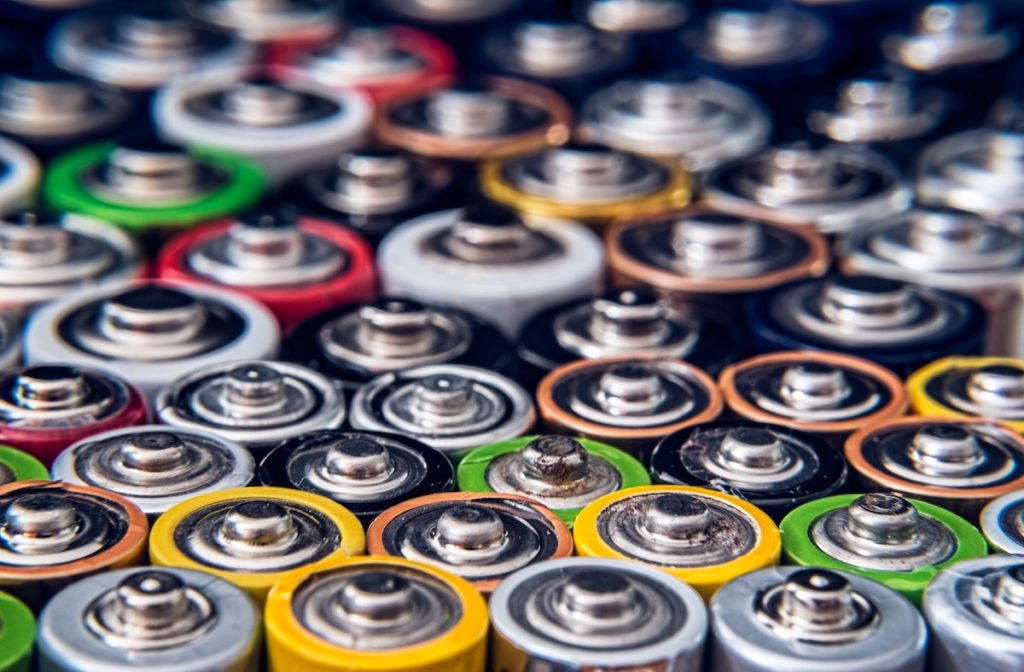
When deciding on the ideal battery for your motorhome, there are many things to take into account including type of battery, servicing needs and even capacity. Lead-acid batteries tend to be a cost-effective solution while lithium ion or AGM ones offer longer life expectancy with greater performance. It is important to also consider how much voltage the power source can manage as well as its total capability when selecting what size you need. Keeping this information in mind will make sure that all necessary electrical systems and appliances run optimally from an appropriate energy supply provided by the chosen battery model for one’s motorhome.
Determining Battery Capacity
When figuring out how much energy a motorhome battery can handle, amp-hour rating is the best indicator. The capacity of said battery can be determined by multiplying all electrical devices’ wattage with their use duration each day and dividing that result by voltage level. Although these figures are estimates since efficiency levels and usage patterns come into play when calculating true power supply rate. Having accurate information about your RV’s battery avoids any chance of overcharging or undercharging it due to insufficient data on its capabilities
To avoid running low on electricity for appliances in your home away from home, make sure you have sufficient knowledge concerning the limit of current transmission capability as indicated by the specs found within its ampere-per hour score—this will ensure optimal performance without risking too little or too much energy discharge from time spent using items onboard.
Battery Size and Compatibility
When selecting the ideal battery for your motorhome, a number of variables need to be taken into consideration. These include things like size and voltage compatibility as well as capacity. The specifics of your vehicle including type and fuel used can also play an important role in determining what kind of power source is best suited for you.
The house battery should match both the electrical system and meet all necessary energy needs. Its amp-hours dictate this factor while inches denote physical size parameters that may come with it. That being said, taking these criteria into account will make sure that you have found yourself a compatible replacement or upgrade when choosing new batteries from which to draw on in any given situation, making certain comfort no matter where life takes you!
Advantages and Disadvantages of Different Battery Types

When it comes to selecting the right type of motorhome battery, there are several benefits and drawbacks for each option. Lead-acid batteries offer an economical cost per watt-hour as well as a powerful specific power output but their lead composition is weighty, capacity modest and life cycle limited, recharging also tends not to be that efficient or swift. AGM (Absorbed Glass Matt) batteries come with relatively low self-discharge rates along with high energy efficiency plus prolonged cycles yet have higher costs associated To restricted capacities compared to other types available. Lithium ion variations on the other hand boast considerable specific energy levels combined with superior density which offers extended lifespans – although this kind does tend towards more expensive than average pricing coupled alongside bounded quantities versus different varieties out there..
Understanding thoroughly what perks and downfalls appear by using every form of batter aids one make wise decisions when deciding which kind they should fit into their motorhome .
Lead-Acid Batteries
For RV owners, lead-acid batteries are a very popular choice due to their cost effectiveness and dependability. They may have some drawbacks such as being prone to acid leakage or spillage, which should be inspected regularly for signs of corrosion or swelling in order to maximise performance and life expectancy. Lithium batteries can offer increased efficiency but AGM units tend towards greater expense than conventional lead acids. Careful maintenance including charging correctly will help minimize any potential damage over the long term while extending battery lifetime.
AGM Batteries
Lead acid batteries are used in many RV applications, but AGM or absorbed glass mat models offer improved features like increased resistance to heat and overcharging as well as maintenance free operation. The added efficiency is due to the presence of a fiberglass mat that helps capture more energy into an area with reduced size. Although they cost more than traditional lead-acid batteries, this extra expense might be offset by their higher performance for RVer owners seeking greater convenience from low-maintenance components. Regular care such as checking terminals and inspecting corrosion should still form part of one’s regular upkeep regimen when owning these types of lithium ion stored power units known collectively under the moniker “AGM” though.
Lithium-Ion Batteries
Lithium-ion batteries offer RV owners a range of advantages that other batteries may not, making them an attractive option for their motorhome. These include high energy density, extended lifespan with minimal maintenance required and they are also lightweight and compact. These types of battery typically come at a higher price than AGM or lead acid models and require specialized charging equipment to prevent overcharging or rapid discharge. Despite this extra cost, the benefits associated with lithium ion cells can still make it worthwhile investment for those who want improved performance from their power source without any additional upkeep requirements.
Proper Care and Maintenance of Motorhome Batteries
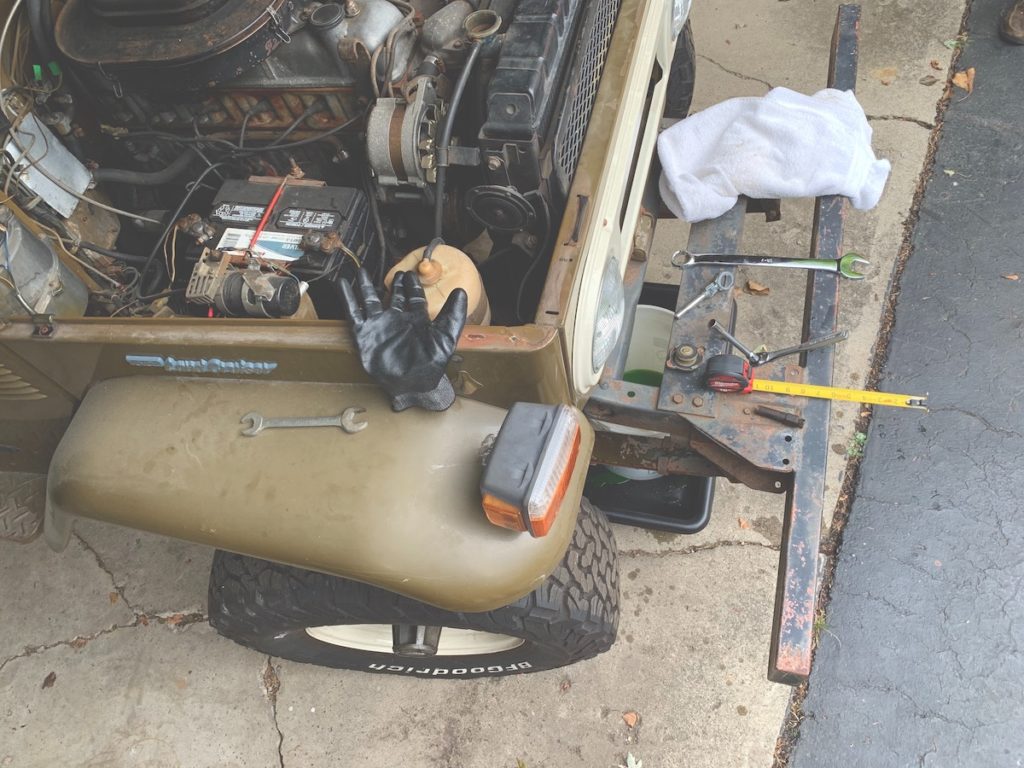
When it comes to extending the life and maintaining optimal performance of motorhome batteries, proper care and maintenance is key. To preserve your RV’s battery health, ensure its water levels are regularly checked, keep the terminals clean at all times while avoiding deep discharges whenever possible. Using a battery monitor along with frequent charging sessions can prove beneficial in preventing any upcoming issues down the road. Following these simple tips will help you get maximum output from your vehicle’s power source for years ahead!
Charging and Discharging
Maintaining a motorhome battery’s optimal performance and preventing damage is essential for ensuring its long life. There are multiple power sources available to charge the battery, such as shore power with converters, camping generators, solar energy or alternators while driving. It is important to use an appropriate charger according to your type of battery and manufacturer’s instructions in order not put it at risk when charging it. To maximize protection you should also avoid deep discharge cycles. Discharging gradually will provide more benefits over time protecting your batter from unexpected damages
Storage and Winterization
Storing and winterizing your motorhome batteries correctly can prolong their life span while preventing damage. To properly store and protect RV batteries, one should keep them in a dry place, disconnect the battery from its connection to the RV by first taking off the negative terminal followed by positive terminal, clean it using baking soda diluted with water while brushing away dirt or any form of corrosion. For when storing, make sure you place on an non-conductive surface such as cardboard avoiding contact between floor & battery for lead acid type top up levels before storage will help maintain charge level during this time period plus use either a smart charger or trickle charger .
Troubleshooting Common Motorhome Battery Issues

Motorhome batteries can experience various issues, one of the most frequent being overcharging or undercharging. This may result in a loss of water inside and corroded plates that will lead to poor performance. Warning signs are physical battery case damage, capacity reduction, corrosion on terminals, starting difficulties as well as dim headlights and bulging/humping on the cell itself if it has an low voltage reading (below 12.3 volts). Taking proper care by regularly monitoring its voltage level and charging when needed with appropriate chargers is necessary for efficient functioning of your motorhome’s power source – preventing staying in a discharged state long-term should be avoided at all cost.
Signs of a Failing Battery
It is important to be aware of the symptoms that indicate a battery in your motorhome might not be functioning as it should. Poor cranking, weakened headlights and an inability to retain power are all signs you need to look out for – If corrosion or any form of leakage is present on the outside, these could also point towards the fact that a replacement may soon become necessary. Taking steps early can avoid more significant issues with its electrical system. Thereby making sure there continues to be reliable supply of energy available for your RVing needs.
Preventing Overcharging and Undercharging
Maintaining the charge level of your motorhome batteries is essential in avoiding damage and extending their lifespan. To stop overcharging, a multi-stage charger can be used. It adjusts according to how full the battery has become before turning off when fully charged. Isolator switches and built-in battery tenders also help protect against undercharging by removing any connection between the RV’s electricity system while not being utilised or maintaining its charge respectively. Checking water levels regularly Helps avoid insufficient charging of these batteries as well.
Top Motorhome Battery Brands and Models
When selecting a battery for your motorhome, take into consideration the size and capacity of the product as well its warranty from the manufacturer along with their customer service. No matter if you go for lead-acid or AGM/lithium ion batteries – each having their own set of advantages and disadvantages – prioritizing those features will ensure that you receive reliable power at great value out of it.
Lead-Acid Battery Recommendations
Lead-acid batteries are a cost effective and reliable choice for motorhome owners. A few well recommended lead acid models include the Renogy Deep Cycle AGM Battery, Universal Sealed Lead Acid battery, as well as East Penn Deka’s Napa GC2 variety. Although these may require more upkeep than Lithium or AGM options, they can still offer great performance if maintained correctly. Consequently it is essential to carry out proper care of your lead-acid battery in order to guarantee its long life usage within motorhomes .
AGM Battery Recommendations
RV owners who are in the market for a low maintenance battery with efficient performance should consider AGM batteries. This type of RV-specific power source can be regarded as one of the best available options to replace traditional lead acid ones, such as LiTime 12v 100Ah LiFePO4 Battery or Redodo 12V 100Ah Lithium Battery, both highly reliable and durable choices. Other top rated models like Optima Yellow Top AGM and WEIZE Deep Cycle offer a significant lifespan plus minimal requirements when it comes to servicing them over time. Although they come at higher cost than usual lead acid units, investing into an AGM product will prove beneficial given its longevity and less demanding care routine compared to others on the market today
Lithium-Ion Battery Recommendations
RV owners desiring a power source that offers impressive performance, long lasting use and minimal maintenance should look no Than lithium-ion batteries such as the RV house battery. Amongst some of the most renowned options are Battle Born LiFePO4 Deep Cycle Battery, Renogy Lithium-Iron Phosphate Battery and ExpertPower Lithium LiFePO4 Rechargeable deep cycle option. Although pricier than AGM or lead acid alternatives they provide benefits in energy density, dependability and low servicing needs to outweigh their cost discrepancy.
Summary
It is essential for an RV owner to comprehend the complexities of motorhome batteries. As such, one should make informed decisions by being mindful of various types and their strengths and weaknesses. Ensuring suitable care as well as upkeep regimes on a regular basis. This will guarantee that your recreational vehicle continues operating smoothly over time, selecting the correct battery based off individual needs and inclinations is imperative! Ultimately, troubleshooting any potential issues related to power supply in advance can ensure hassle-free expedition experiences with your Motorhome.
Frequently Asked Questions
What are the best batteries for motorhomes?
The RV industry is fortunate to have access to some of the best batteries available on the market: Battle Born Batteries LiFePO4 Deep Cycle Battery, Renogy Deep Cycle AGM Battery, LiTime 12V 100Ah LiFePO4 Battery, WeiZE 12V 100Ah Deep Cycle AGM and Optima Yellow Top AGM. All these models provide outstanding performance while guaranteeing safety features as well as modern designs.
They all offer excellent quality power for your motorhomes, ensuring that you get top notch battery solutions for your recreational vehicles!
Do i need a battery for my travel trailer?
A deep cycle battery is an absolute necessity for a travel trailer, as it will not be able to function without one. It can usually provide enough power and energy consumption to last around two or three days before needing recharging again. Without the necessary battery bank in place, your trip simply won’t run successfully!
What types of motorhome batteries are available in the market?
The batteries most frequently found in motorhomes are lead-acid, AGM and lithium ion varieties. Of these three types of power sources, the latter (lithium) is especially popular.
How do I determine the necessary battery capacity for my RV’s electrical needs?
To calculate the required battery capacity of an RV’s electrical system, divide the total wattage used by all devices for a certain amount of hours each day and multiply it with the voltage.
How do I properly charge and discharge my motorhome battery?
For optimal performance of the battery in your motorhome, always use a charger suited for its type and follow manufacturer’s guidelines. It is important to ensure slow yet evenly distributed discharge for best results.

